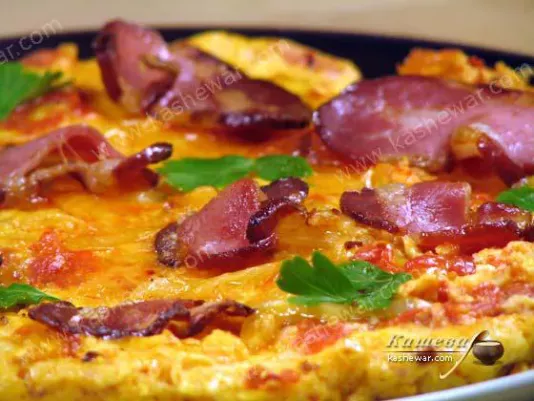Yogurt Dessert with Rum
Yogurt dessert with rum is a Spanish recipe that is prepared at least 2 hours before serving.

Spanish cuisine is one of the most vibrant Mediterranean gastronomic cultures. It has been shaped by centuries of tradition, the influence of Arab, Roman, Moorish, and Christian worlds, and the richness of local natural resources. It is based on fresh products – vegetables, legumes, grains, seafood, olive oil, wine, spices, and herbs. Simple recipes with unexpected depth of flavor are the hallmark of Spanish cuisine. Paella, tapas, gazpacho, tortilla, croquettes – these names have long become synonymous with the Spanish way of life. A key role is played by the concept of shared meals – food as a social act, a moment of family or friendly unity. Spaniards eat slowly, with pleasure, talking, drinking wine or sangria. Dishes are often adapted to the local climate: in hot Andalusia – more cold soups, on the coast – more seafood, in Catalonia – fish with nut sauces, in Castile – stewed meat dishes. All this creates a multifaceted, lively cuisine where tradition and modernity coexist side by side.
Spanish recipes impress with their simultaneous simplicity and depth. Most are based on a few high-quality ingredients, highlighted by proper cooking techniques. Paella is a rice dish with seafood or meat, vegetables, and spices, cooked in a wide shallow pan. Gazpacho is a cold tomato soup that refreshes in the heat. Tortilla is an omelette with potatoes and onions, served warm or cold. Tapas are small snacks that include cheeses, sausages, olives, anchovies, croquettes, and meat or vegetable pinchos. These are often accompanied by bread, sauces, and fragrant oil. Spaniards favor traditional cooking methods: baking, stewing, and frying in olive oil. Recipes are passed down through families, are seasonal, and often vary by region. The secret of Spanish cuisine lies not in complexity, but in the sincerity of flavor, proper product balance, and a love for life that can be felt in every dish.
Spain is a country with a strong regional identity, which is clearly reflected in its cuisine. Catalonia is known for fish dishes with nut or tomato sauces, meat with fruit, and crema catalana. The Basque Country is famous for haute cuisine, innovation in gastronomic trends, and traditional pinchos. Valencia is the birthplace of paella, prepared with rabbit, chicken, or seafood. Andalusia is the land of gazpacho, salmorejo, fried fish, and the highest quality olive oil. Castile and León are centers of meat cuisine: stewed legumes, roast suckling pig, lamb. Galicia is the land of seafood: octopus, shellfish, sardines. The Canary Islands offer a unique blend of African, Spanish, and Latin American influences. Each region has its own traditional dishes, cooking methods, and presentation styles. Regional cuisine is a source of local pride – it is protected, promoted, and passed on as cultural heritage.
Olive oil is the heart of Spanish cuisine. It is used for frying, salad dressings, marinating, and baking. High-quality cold-pressed oil is an essential ingredient in most dishes. Spaniards choose simple, seasonal products: tomatoes, peppers, eggplants, zucchini, garlic, onions. Seafood and fish are a daily part of the diet in coastal regions. Meat, especially pork, is used to make sausages, jamón, and grilled dishes. Legumes (black and white beans, chickpeas, lentils), rice, eggs, and cheeses (like Manchego) are important elements of the cuisine. The most common spices include paprika, saffron, oregano, bay leaf, and cumin. Aromatic balance is achieved through precise seasoning, not excess. Spanish cuisine values the natural taste of ingredients, often choosing simple combinations where each component is clearly present. This approach preserves nutrition, enhances flavor, and makes each dish light yet deeply satisfying.
Spanish eating habits follow their own rhythm and structure. Breakfast is usually light – coffee, bread with tomato, or a croissant. More emphasis is placed on lunch, which is hearty and consists of several courses: first (soup or salad), second (meat or fish with a side), and dessert. Dinner is lighter and served later, often accompanied by tapas. Tapas are a culture of small portions shared in company while enjoying wine or beer. These can be simple olives or more elaborate snacks with seafood, meat, vegetables, or cheese. In many cities, tapas are served free with a drink order. Merienda (afternoon snack) and la copa (late-night bite) are also popular. This rhythm allows Spaniards to enjoy their meals without haste, often outdoors. Dishes are not just food, but part of social life. That is why in Spain, eating is a ritual of pleasure and connection.
Spanish desserts are a mosaic of Arab, Catholic, and Mediterranean influences. The most famous are churros with chocolate, flan, almond tortilla, turrón, pan de Calatrava, crema catalana. All are made with eggs, milk, sugar, almonds, and citrus fruits. Festive desserts such as the Christmas cake “Roscón de Reyes” or the Easter “Mona de Pascua” carry symbolic meaning. Drinks are another pride of Spanish culture. Wine is an essential part of any meal – red, white, rosé, sparkling (cava), or dessert varieties. Sangria – a fruity wine-based drink – is popular in summer. Other favorites include sherry, vermouth, cider, café con leche, and cocoa. Culinary heritage plays an important role: festivals, cheese, wine, and oil routes, paella contests. Here, food is an art form, a national pride, and a source of joy. Spanish cuisine is a harmony of flavor, tradition, and modernity, embodying a passion for life.